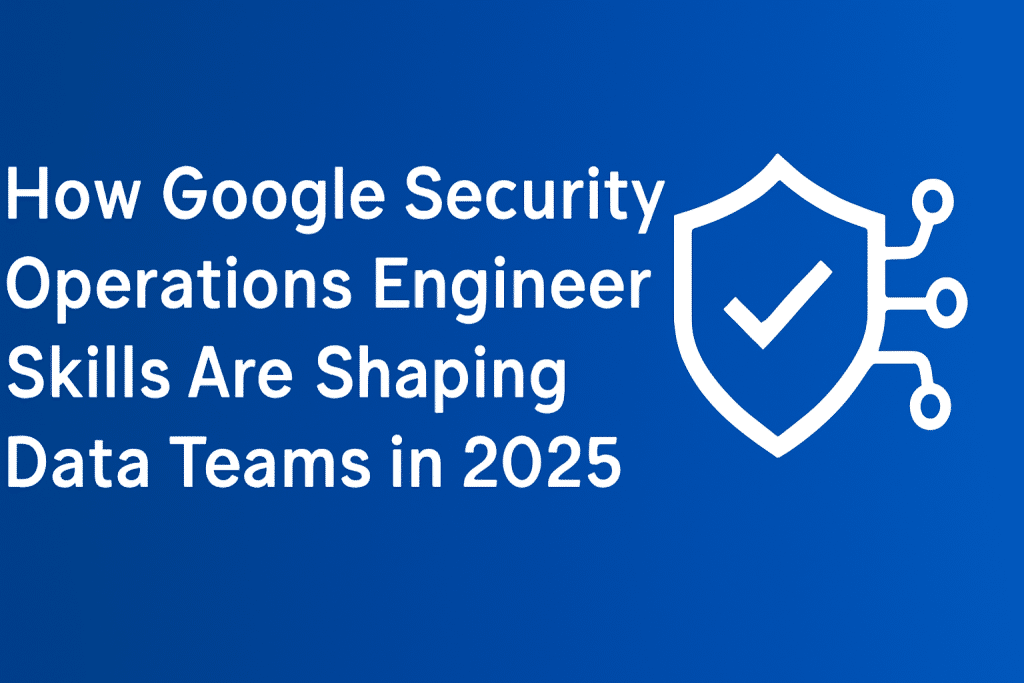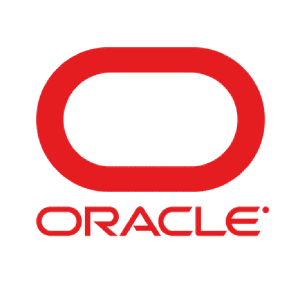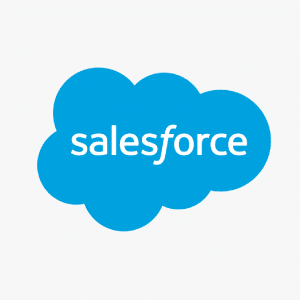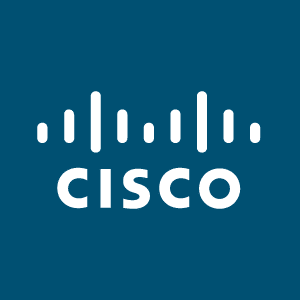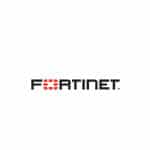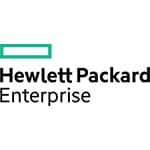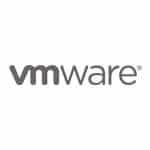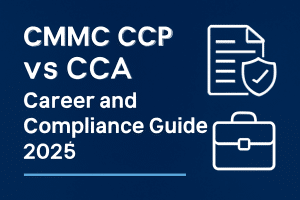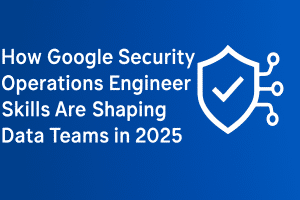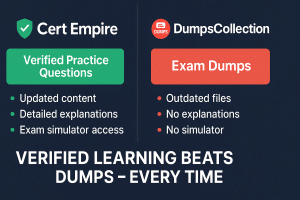Security used to be a separate department—an isolated function responsible for alerts, investigations, compliance reports, and internal cybersecurity tasks. But in 2025, data teams and security teams have become deeply integrated. Cloud-native analytics stacks rely on secure pipelines, compliant storage, identity governance, and automated monitoring. Google Security Operations Engineer skills are now central to how organizations build, deploy, and protect data systems.
Data engineers, analytics engineers, platform engineers, and cybersecurity teams all work closer than ever before. Threat detection has shifted left, meaning security events are handled closer to the data layer. Cloud workloads have become more distributed, with data flowing through BigQuery, Pub/Sub, Vertex AI, and hybrid pipelines. The result: data teams can no longer function effectively without security skills and Google’s security ecosystem is becoming the industry standard for this collaboration.
This article explores, both practically and in depth, how Google Security Operations Engineers influence, accelerate, and protect the work of modern data teams. Whether you’re a beginner learning cloud security or an intermediate professional expanding your data engineering expertise, the capabilities discussed here reflect the evolving demands of secure, analytics-driven organizations. For additional preparation resources, you can review the Google Security Engineer Exam questions, which support the foundational skills covered throughout this guide.
Why Google Security Operations Skills Matter for Data Teams in 2025
The modern data stack has changed more in the past five years than in the previous twenty. With cloud-first architectures, global data movement, and AI models that rely on sensitive datasets, the risk profile has increased dramatically. Data teams can no longer rely solely on engineers to design pipelines and analysts to build dashboards. Security must be integrated from the start.
Google Security Operations (formerly Chronicle) provides a foundation that merges operations, data analysis, detection, and infrastructure-level security. These skills help data teams:
- Protect data pipelines from unauthorized access
- Automate detection of anomalies, leaks, or unusual patterns
- Maintain compliance across cloud and hybrid environments
- Respond to threats faster with AI-driven context
- Govern identities, workloads, and network boundaries
- Build secure architectures by default
Security no longer happens at the perimeter—it happens at every stage of the pipeline.
Understanding the Role of a Google Security Operations Engineer
Before diving into the influence on data teams, it’s important to define the role.
A Google Security Operations Engineer focuses on:
- Threat detection and response
- Cloud-native security monitoring
- Incident analysis using Chronicle + SIEM/SOAR tools
- Securing BigQuery pipelines
- Identity and access management (IAM)
- Detecting anomalous data movement
- Hardening GCP infrastructure
- Creating automated response workflows
These engineers bring a combination of security, analytics, automation, and cloud expertise.
Core Responsibilities That Impact Data Teams
1. Data Pipeline Protection
They secure ingestion, transformation, and storage layers to prevent unauthorized access or pipeline manipulation.
2. Threat Detection Across Datasets
They use Chronicle, BigQuery, and Looker to detect unusual behavioral patterns in system logs and data flows.
3. IAM Governance for Data Workloads
They control which identities, service accounts, and processes can modify or view sensitive data.
4. Monitoring Data Lineage and Access Logs
Understanding how data moves across systems helps detect leaks, tampering, or malicious internal activity.
These responsibilities shape how modern data teams design and operate their platforms.
How Google SecOps Engineers Strengthen Data Infrastructure
Modern data infrastructure must meet three requirements:
- Scalability
- Observability
- Security-first architecture
Google SecOps skills apply to all three.
Ensuring Secure Data Ingestion
Data teams frequently ingest data from:
- APIs
- Webhooks
- Event streams
- Third-party tools
- Internal databases
- Customer-facing applications
If these sources are not secured, attackers can inject malicious data, disrupt pipelines, or access sensitive metadata.
How SecOps Engineers Solve This
- Enforce VPC Service Controls
- Use Private Service Connect
- Restrict data ingestion endpoints
- Secure API keys and service accounts
- Enable event-level logging for Pub/Sub
- Apply schema validation to prevent malformed data
This reduces risks while maintaining reliability.
Securing Data Transformation Layers
Transformation occurs in BigQuery, Dataflow, Dataproc, and increasingly via DBT. Google SecOps engineers ensure:
- Only approved processes run transformations
- Transformation logs are monitored
- Elevated privileges are tightly restricted
- SQL jobs are scanned for suspicious patterns
- Workloads running transformations use hardened service accounts
This minimizes the risk of tampering or privilege escalation.
Protecting Data Storage Environments
Google Cloud Storage, BigQuery, AlloyDB, and Spanner store massive amounts of sensitive data.
Below is a table showing storage risks and the SecOps mitigations applied.
Storage Risks vs Mitigations
| Storage Risk | Description | SecOps Mitigation |
| Public bucket exposure | Buckets accidentally exposed | Uniform bucket-level IAM, public access blockers |
| Excessive permissions | Service accounts with broad access | Least-privilege IAM design + IAM Recommender |
| Data exfiltration | Unauthorized data movement | VPC SC, DLP scans, export restrictions |
| Misconfigured encryption | Unencrypted storage layers | CMEK, automatic encryption enforcement |
| Unmonitored access | No visibility into who accessed data | Audit logs + Cloud Monitoring alerts |
Secure storage is essential for analytics workflows involving sensitive datasets.
The Growing Convergence of SecOps and Data Engineering
In 2025, the line between data engineering and security engineering continues to blur.
Shared Responsibilities Across Teams
Security Is Now Part of the ELT Lifecycle
Modern pipelines follow this flow:

Security sits between loading and transforming, ensuring safe access and compliance before analytics begin.
Why Data Teams Need SecOps Skills
Data teams increasingly take on responsibilities such as:
- Role-based access policies
- Audit log reviews
- Pipeline monitoring
- Encryption and compliance workflows
- Data governance
Google Security Operations Engineers help guide or automate these responsibilities.
Key Google SecOps Skills Influencing Data Teams in 2025
Here we break down specific skills that shape modern data workflows.
1. Chronicle SIEM Expertise
Chronicle is Google’s cloud-native SIEM, processing security telemetry at scale.
How Chronicle Helps Data Teams
- Detects abnormal SQL execution
- Flags suspicious BigQuery jobs
- Identifies compromised service accounts
- Reveals unusual event patterns across cloud workloads
Data engineers benefit from Chronicle’s ability to unify infrastructure logging and analytics-driven detection.
2. SOAR Automation (Security Orchestration)
Google SecOps engineers use SOAR tools to automate incident responses.
Examples of SOAR Automations:
- Automatically suspend compromised service accounts
- Quarantine suspicious workloads
- Block exfiltration attempts
- Trigger DLP scans on sensitive tables
SOAR helps data teams maintain continuity and safety during operational incidents.
3. BigQuery Security Optimization
BigQuery is one of the most widely used data warehouses in 2025. Google SecOps brings specialized knowledge about:
- Authorized views
- Column-level security
- Row-level access policies
- Job user separation
- Encryption keys (CMEK)
- Audit log analysis
BigQuery security used to be handled by data engineers alone. Not anymore—SecOps brings deeper governance and monitoring.
4. Identity and Access Management (IAM)
IAM is the foundation of cloud security.
Key IAM Responsibilities That Affect Data Teams
- Designing least-privilege access
- Managing service account keys
- Rotating credentials automatically
- Enforcing context-aware access
- Scoping BigQuery job permissions
- Integrating IAM with CI/CD systems
Data teams rely heavily on SecOps to ensure that pipelines run securely without giving unnecessary permissions.
5. Data Loss Prevention (DLP) and Sensitive Data Scanning
DLP scans help protect:
- PII
- PCI
- Health data
- Financial information
DLP matters because AI models, dashboards, and pipelines often mask, tokenize, or anonymize sensitive fields—but if scanning isn’t automated, teams risk violations.
The Impact of SecOps on Data Pipeline Reliability
Data reliability extends beyond uptime—it includes security, logging, and compliance. Organizations cannot trust their analytics without secure foundations.

Pipeline reliability directly improves when SecOps skills merge with data engineering practices.
How Google SecOps Engineers Strengthen AI & Machine Learning Pipelines
AI-driven organizations rely heavily on data pipelines for model training, feature engineering, and real-time inference. Google Security Operations Engineer skills now play a crucial role in protecting these end-to-end workflows.
Protecting ML Training Data
Machine learning models are only as strong as the datasets used to train them. Compromised or manipulated data leads to inaccurate predictions, biases, or security vulnerabilities.
SecOps Contributions to ML Data Protection
- Enabling DLP rules to scan for sensitive attributes
- Monitoring dataset access through BigQuery audit logs
- Securing storage buckets containing training data
- Preventing unauthorized downloads or exfiltration attempts
- Ensuring IAM restrictions for Vertex AI datasets
- Detecting unusual training patterns or suspicious retraining jobs
Security becomes part of the ML lifecycle rather than an afterthought.
Securing Real-Time Inference Pipelines
Real-time prediction systems rely on secure streaming pipelines:
- Pub/Sub
- Dataflow
- Cloud Run
- Vertex AI online predictions
SecOps Responsibilities
- Restricting Pub/Sub topics
- Scanning messages for malicious payloads
- Monitoring abnormal spikes in inference requests
- Blocking unauthorized API access
- Hardening prediction endpoints using Cloud Armor
AI systems become safer, more resilient, and less prone to manipulation.
Monitoring ML System Behavior
Google SecOps Engineers leverage:
- Chronicle queries
- BigQuery log analysis
- gRPC request inspection
- IAM anomaly detection
- Cloud Monitoring dashboards
to detect:
- Data poisoning attempts
- Model theft attempts
- Credential misuse
- Unusual API patterns
- Rogue training requests
This proactive model monitoring is essential for 2025’s AI-first organizations.
Real-World Examples of SecOps Influence on Data Teams
In this section, we explore real examples illustrating how Google Security Operations skills shape modern analytics environments.
Example 1 — Detecting Malicious SQL Activity in BigQuery
A large e-commerce company noticed unusual SQL execution patterns in BigQuery.
Symptoms
- Sudden increase in job activity
- Queries accessing sensitive tables
- High-volume export attempts
SecOps Response
- Chronicle flagged activity
- SOAR automation suspended the service account
- IAM roles were re-evaluated
- BigQuery job-level audit logs were reviewed
This prevented what could have been a major breach.
Example 2 — Preventing Data Exfiltration via Cloud Storage
A financial institution used VPC Service Controls to create a secure perimeter around its GCS buckets. During a routine scan:
- DLP detected bulk downloads
- Chronicle correlated events with an external IP
- Automated workflows blocked access instantly
The incident revealed a compromised laptop within the organization.
Example 3 — Hardening a Data Science Sandbox
A data science team created temporary notebooks in Vertex AI Workbench. SecOps stepped in to ensure:
- Service accounts used least-privilege roles
- Notebooks were restricted to internal VPCs
- Training jobs logged all I/O events
- Sensitive datasets were masked by default
This prevented accidental exposure of regulated financial data.
How SecOps and Data Teams Collaborate in 2025
Collaboration between these teams has become structured and recurring. Below is a realistic workflow.
Shared Responsibilities Table
| Responsibility | Data Teams | SecOps Teams |
| Data modeling | ✔ | — |
| Pipeline orchestration | ✔ | — |
| IAM governance | — | ✔ |
| Logging & monitoring | ✔ | ✔ |
| Compliance automation | — | ✔ |
| Data quality | ✔ | — |
| Security alerts | — | ✔ |
| Threat analytics | — | ✔ |
| Warehouse policies | ✔ | ✔ |
With shared ownership, the boundaries become flexible but well-defined.
Weekly Collaboration Pattern
Weekly Sync Meetings
Teams review:
- Incident findings
- IAM request approvals
- New datasets requiring governance
- Pipeline performance metrics
- Upcoming deployments
Quarterly Access Reviews
SecOps ensures:
- Deprecated service accounts are removed
- Excessive permissions are corrected
- Rotation schedules are followed
- New models are properly classified under DLP
Quarterly cleanup drastically reduces long-term risk.
Incident Response Collaboration
When an incident occurs:
Data Teams Handle
- Pipeline debugging
- Understanding which datasets were affected
- Fixing faulty jobs
- Analyzing downstream dashboard impact
SecOps Handles
- Containment
- Investigating root cause
- Credential suspension
- Regulatory reporting if needed
Together, they improve resiliency.
SecOps Skills Every Data Professional Should Learn in 2025
Even if you’re not a security engineer, you should understand certain foundational concepts.
Skill 1 — IAM Principles
Understanding roles, permissions, and identities ensures safe access to analytics systems.
You should learn:
- Roles vs permissions
- Workload identity federation
- Service account hygiene
- Privilege boundaries
Skill 2 — Audit Logging Essentials
Audit logs reveal:
- Who accessed data
- When they accessed it
- What jobs they executed
- What resources were modified
BigQuery audit logs should be part of every data engineer’s toolkit.
Skill 3 — Secure Pipeline Design
Learn to build pipelines that:
- Restrict access
- Limit external egress
- Enforce schema validation
- Deploy through CI/CD
- Use encryption at rest + in transit
Skill 4 — DLP Scanning Basics
Beginners should understand:
- PII detection
- Tokenization
- Data masking
- Sensitive dataset labeling
These concepts help build compliant ML workflows.
Skill 5 — Network Security Concepts
Even basic knowledge helps:
- Firewalls
- VPC design
- Private endpoints
- Secure APIs
- IP allowlists
- Hybrid network routing
Data teams working in mixed environments benefit significantly from this knowledge.
The Economic Impact of SecOps Integration in Data Teams
Organizations with mature SecOps practices experience fewer incidents, lower operational costs, and stronger analytics performance.
| Category | Without SecOps Skills | With SecOps Skills | Improvement |
| Security incidents | High frequency | Rare | ↓ 70–85% |
| Pipeline downtime | Moderate | Low | ↓ 40–60% |
| Data leakage risk | Significant | Minimal | ↓ 50–90% |
| Unauthorized access | Common | Controlled | ↓ 80% |
| Compliance effort | Manual | Automated | ↓ 60% |
Companies save millions by reducing incident recovery times and improving operational stability.
Why These Skills Matter for Beginners in 2025
Beginners starting cloud or data careers need not fear security—it is now a natural part of the job.
Benefits for Beginners
- Better job prospects
- Higher earning potential
- Ability to contribute to secure architecture
- Stronger technical foundation
- Ability to understand the modern threat landscape
Google SecOps skills give new professionals a competitive edge without requiring advanced cybersecurity backgrounds.
The Future of Google SecOps and Data Teams
As cloud adoption accelerates, the collaboration between data and security teams becomes even more critical.
Trends to Watch
- AI-driven threat detection
- Automated identity governance
- Real-time anomaly detection in pipelines
- Expansion of serverless SecOps tooling
- Security-aware ML platforms
- Consolidation of data governance and security governance
These trends define the next generation of cloud-native organizations.
Frequently Asked Questions (FAQ)
Do data engineers need to learn Google SecOps?
Not fully—but understanding IAM, audit logs, and basic detection concepts is now essential.
Does Google Security Operations replace traditional SOC tools?
It enhances them; many organizations use Chronicle alongside existing SIEM platforms.
Is security becoming part of analytics jobs?
Yes. As pipelines become more distributed, security responsibilities are increasingly shared.
Can beginners learn Google SecOps tools easily?
Yes. Google provides clear documentation, hands-on labs, and beginner-friendly learning paths.
Do SecOps engineers influence BI and dashboard teams?
Absolutely — they help enforce governance and ensure metrics remain protected end-to-end.
Conclusion
In 2025, Google Security Operations Engineer skills are not isolated technical competencies—they are the glue holding modern data systems together. As organizations evolve into data-driven, AI-centric structures, the need for secure pipelines, protected datasets, compliant architectures, and automated threat detection grows exponentially. By merging security with analytics workflows, organizations gain resiliency, precision, and a competitive advantage. Whether you’re a new learner or a seasoned engineer, SecOps knowledge opens the door to safer, smarter data operations built for the future.
Resources
- Google Cloud Security Operations Documentation: https://cloud.google.com/security-operations
- Chronicle SIEM Technical Overview: https://cloud.google.com/chronicle
- BigQuery Security Best Practices: https://cloud.google.com/bigquery/docs/best-practices-security
- Google Cloud IAM Documentation: https://cloud.google.com/iam/docs
- NIST Cybersecurity Framework: https://www.nist.gov/cyberframework
Last Updated on by Team CE

